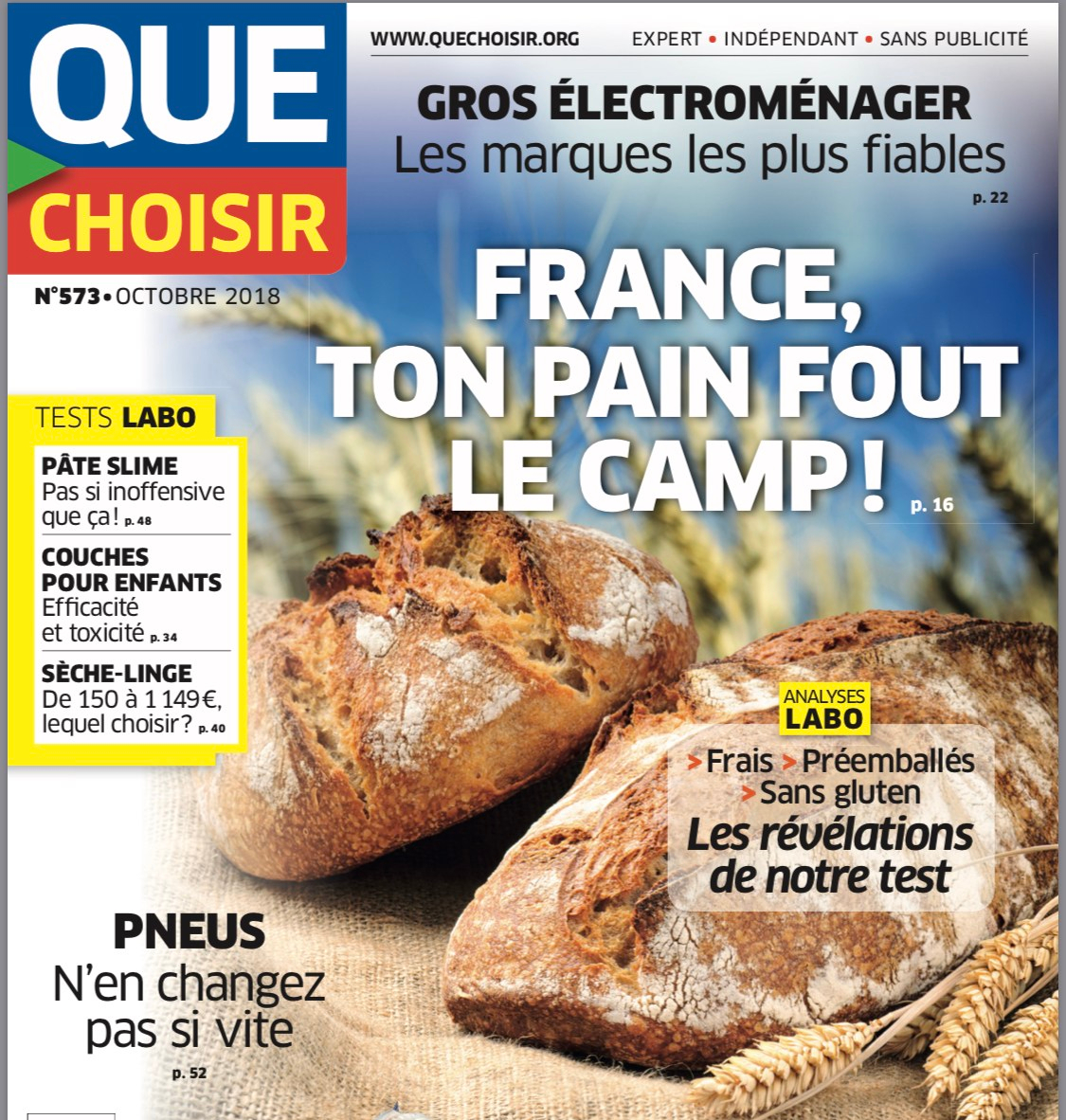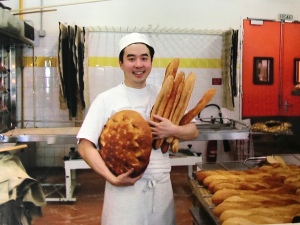I bought an e-magazine (QUE CHOISIE – What To Choose) yesterday and came across an article I felt strongly to share. I casually translated it…
BREAD IS NO LONGER HOW IT USED TO BE.
Behind this professional term call “BAKER”, hides a multi-faceted craft skills whereby many of them depend on large milling companies/ groups who directly contribute to the standard consistency of the bread market and a technical system that weakens baker’s professional baking skills. For consumers, this is extremely difficult in identify and to make choices when it comes to buying bread.
In France, for the past twenty years, the term “bakery (boulangerie)“ has been protected and is reserved for craft entrepreneurs who knead, shape and bake bread on the spot. This definition is among the most stringent in Europe whereby it prohibits any form of freezing the bread dough or freezing during its development process of the bread (Bake fresh from scratch).
Despite these safeguards by legal definition of the term “BAKERY”, the situation has turned bakers foolish.
With 35,000 establishments, the artisanal bakery remains the leading food retailing business in France, but every year nearly 1,000 independent bakeries shut the door due to rural desertification and the competition of industrial bread, which today accounts for 43% of the bread market in France. Therefore, today, independent bakeries who manages a single store is no longer sustainable. A new model among the competition has surfaced: the chain bakeries.
Particularly sprouted in urban areas, chain bakeries like Marie Blachère, Louise and Ange (around 300, 120 and 60 shops respectively) play on two levels: bread made from scratch on-site, which allows the legal use of the terms like “BAKERY (BOULANGERIE)”, “HOMEMADE” and even “ARTISAN”. (In France, all these labels are legally defined to serve and protect traditions).
However, chain-bakeries also use recipes offered by industrial premixes whereby they just need to mix, shape and continuously bake-out, proposing special offers “buy 3 get one free” and also danish pastries (croissants etc…) made partly in industrial factories whereby the chain-bakeries would thawed, proofed and baked on site.
Sole proprietor bakers from the countryside and small towns are the first to suffer from these new breed of chain-bakeries, since they no longer have the appeal of yesteryear. The chains are strategically located in shopper traffic zones with ample parking lots, whereas the bakery in front of the sacred church has lost its flock.
Many sole proprietor bakers have also developed a subordinate relationship with their suppliers: the millers; as some are now much more than flour suppliers. While flour groups share more than half of the market (see opposite), these companies have taken a dominant position that Marie Astier, author of the book <<What bread do we want?>>, Is largely responsible for consistency.
Initially, however, everything started with a good intention: “In the late 80s, while the dominant model was the ultra-bleached white baguettes made mechanical, some millers wanted to enhance the quality of bread. It was the birth of the Banette milling group who offered bakers recipes combining a hand-shaped dough with so-call a more upscale flour, of which were promoted via local television ads. But, little by little, the bakers were deprived of their know-how. Until becoming, for some, as the technical operators of the millers more than of a craftsmen!
In March 2018, <<Que Choisir Magazine>> came across on the grand booth of the <<Grands Moulins de Strasbourg>> (own by the group Egast) in an exhibition. The Fourth largest French miller, which has a partnership with Banette, owns eleven mills and the brand “Le Pain Boulanger (The Bread from the Baker)”. At the exhibition, they presented a concept bakery store in search for potential business partners.
Like the practices of all major millers, the layout of the sales outlets, marketing and technical support, and even start-ups financing are now part of the services offered by the milling company. The latter also offer training to master the so-call “Home (Maison)“ recipes. “Turn-key” breads such as “Banette n ° 07”: a “well-being” bread with gluten-free leguminous flours, “Bousco”: described as “authentic bread with a good regional flavour… … One of those breads from yesteryear revealed by master bakers knew how to perpetuate the secret from generation to generation … “.
Behind these concepts are “pre-mixes” – flour pre-mixes with additives (bread improvers, conditioners and inactive bread flavours) and, if necessary, various ingredients (seeds, dried fruits, goji berries or chia seeds …) – which the baker having signed a contract for such supplies could brand and create its own recipes.
A double-edged sword for Gérald Brochoire:
“Mixes simplify processes, saving time and saving labor. But these recipes, perfectly balanced to meet the regulations, lead to a seamless of supply of bread. “Marie Astier adds:” The phenomenon of miller’s brands is not new, but the products are multiplying because of ferocious competition to somewhat “assist” craftsmen: baguettes with recipes and various forms, mixes for healthy breads, farmer-style to flatbreads etc. That brought the profusion, but the comparison of the catalogs makes it possible to note that they are repeated from one mill to another. “
REAL BAKERS REACT
Today, an elite of bakers are raising the alarm. Among them, researchers, historians and associations study the virtues of natural leavens (sourdough) and ancient grains. Lovers of good bread list good bakeries (eg. blogger “Painrisian”, for example) and of course bakers, often from reconversion.
Louis Lamour is one of them. A former financier turned baker in Bordeaux for ten years.
“Without mix, with flour without additions and natural leaven,” he summarizes.
For bread that tastes really different comes with a cost. Because making bread “the old way” is more expensive. As “Buying flour from a small miller costs three times more than that of an industrial miller who bleached and reconditioned the flour,” says Louis Lamour.
Seeking to strike the right balance, big-scale industrial bakeries and chain bakeries today would portray the baker as a “guardian of traditions” but insisted that he “is nonetheless an artisan of today.” The symbolic power of (good)will bridged the chasm between theory and practice. Central bread factories awash in wistfulness for “the rediscovered bakery [la boulangerie retrouvée]”, placed its ambitions in the same tradition of sensible marriage, evoking “a happy balance between the utilisation of perfected matériel and a perpetuation of certain gestures of “autrefois“. The evocation of l’ancienne was more often a “coup du décor” – a decorative ploy – than the harbinger of better bread. The original bread does not exist…. The fashion for the authentic is governed by the “authentoc” – gaudy imitation. Yet our confidence in the past as a guide to primal virtues seems boundless.















